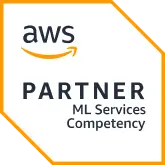Snowflake Data Engineering
Simplify Engineering, Empower Brilliance
Take the complexity out of data engineering with Snowflake. Effortlessly design scalable data pipelines, manage vast datasets, and deliver insights faster than ever. Empower your team with a platform built for efficiency and innovation.

Home » Services » Snowflake Consulting » Data Engineering





Snowflake Data Engineering:
Revolutionizing the Way We Handle Data
Organizations need strong systems to handle, transform, and analyze vast amounts of data in real time. Snowflake, a cloud-based data platform, has emerged as a leader by offering strong solutions for data warehousing, data pipelines, and query processing.
Snowflake’s platform has gained immense traction, serving thousands of businesses globally and processing over 2.6 exabytes of monthly data. With projected revenue growth of 48% year-over-year in 2024, it's clear that companies are increasingly turning to Snowflake for their data engineering needs.
The platform has been reported to cut data processing costs by up to 70% while improving query performance by 50% on average. With its flexible architecture, Snowflake data engineering transforms how businesses manage their data infrastructure. It provides seamless integration with third-party tools and supports on-demand scaling.
In this blog, we will explore Snowflake's key features and benefits for data engineering, including data transformation, data ingestion, and best practices for optimizing performance.
What is Snowflake Data Engineering?
Snowflake data engineering refers to the processes and tools involved in transforming raw data into actionable insights using Snowflake’s cloud platform. Snowflake provides an integrated solution for building scalable data pipelines, storing structured and semi-structured data, and enabling real-time complex analytics.
Unlike traditional data systems, Snowflake decouples storage and computing, allowing users to scale up and down based on workload requirements. Its ability to manage data efficiently, whether for business intelligence (BI) applications, machine learning (ML), or real-time analytics, makes it a preferred platform for modern data engineers.
Core Components of Snowflake for Data Engineering
Snowflake’s platform includes several core components designed to streamline data engineering processes:
Data Warehousing
Snowflake’s data warehouse is designed to store large volumes of structured and semi-structured data, making it ideal for businesses that rely on data analytics. It uses cloud object storage, which enables massive scalability without the limitations of on-premise storage. Snowflake also supports high-performance query processing, allowing businesses to run complex queries across vast datasets in seconds.
Data Pipelines
Data pipelines are essential for moving and transforming data from various sources to destinations where it can be analyzed. Snowflake data engineering offers powerful data pipeline tools, such as Snowpipe, to automate and streamline data ingestion. With its decoupled storage and computing, Snowflake ensures that pipelines are highly performant, scalable, and flexible.
Query Processing
Snowflake’s SQL-based query processing engine provides rapid access to data, making it easier for data engineers to transform, analyze, and model data. Snowflake’s virtual warehouses allow engineers to allocate compute resources based on workload demands, ensuring that queries are performed optimally.
Data Sharing
One of the most unique features of Snowflake is its secure data-sharing capabilities. Snowflake allows organizations to share live data between accounts without moving or copying it. This feature is handy for data collaboration across departments or with external partners.
Security and Governance
Snowflake prioritizes data security and governance, ensuring data engineers can manage compliance and privacy requirements. It offers end-to-end encryption, role-based access controls, and audit trails, ensuring that data is protected and managed promptly.

What is Data Transformation and ETL in Snowflake?
Data transformation is a critical aspect of Snowflake data engineering. Traditional Extract, Transform, Load (ETL) processes are being replaced by ELT (Extract, Load, Transform), which Snowflake excels at.
Overview of ELT vs. ETL in Snowflake
In traditional ETL processes, data is extracted from a source, transformed into a usable format, and then loaded into a data warehouse. Snowflake data engineering favors an ELT approach, where raw data is first loaded into Snowflake, and the transformation occurs afterward. This allows businesses to store all raw data first and decide later what transformations are necessary based on changing business needs.
Tools and Methods for Data Transformation
Snowflake allows data engineers to perform transformations using SQL, stored procedures, and User-Defined Functions (UDFs). Engineers can create complex transformation workflows directly in Snowflake or use third-party tools like Talend, Informatica, and Fivetran for additional ETL capabilities.
Integration with Third-Party ETL Tools
Snowflake integrates with numerous ETL tools, including Talend, Informatica, Fivetran, and Matillion. These tools allow businesses to connect with different data sources and automate the process of extracting, loading, and transforming data, making Snowflake a flexible platform for various data engineering needs.

How Snowflake Data Engineering Works?
Snowflake provides a comprehensive solution for all stages of data processing from ingestion to transformation to consumption. Collaborating with Snowflake consulting partners ensures businesses can fully leverage these capabilities to optimize their data workflows and achieve their goals effectively.
Data Storage
Snowflake uses cloud object storage to store structured and semi-structured data (JSON, Parquet, Avro, etc.). This enables businesses to store all types of data cost-effectively without worrying about running out of space.
Virtual Warehouses
Snowflake employs virtual warehouses, essentially compute clusters, to execute operations like querying and transforming data. These virtual warehouses are scalable on-demand, meaning they can adjust in size to meet the performance requirements of different workloads.
Data Ingestion
Snowflake supports several data ingestion methods. Snowpipe is an automated service that continuously ingests streaming data. Data engineers can also load data in bulk using manual batch loads or integrating Snowflake with third-party data sources.
Data Processing
One of Snowflake's key advantages is its decoupled storage and compute architecture. This allows businesses to scale their data processing power independently of their storage needs. This flexibility ensures that even the most demanding data engineering workloads, such as real-time processing, large queries, and ETL pipelines—are performed efficiently.
Data Transformation
Data can be transformed directly within Snowflake using SQL or integrated tools like dbt (Data Build Tool) and Apache Spark. This enables complex transformation workflows to be built inside the platform, reducing the need for external processing systems.
Optimizing Performance
Snowflake offers various features for optimizing data performance, such as clustering, materialized views, and auto-scaling. These features enhance the efficiency of data pipelines, allowing data engineers to process large datasets faster and with greater accuracy.
Data Consumption
Snowflake integrates with multiple platforms to enable data consumption. Engineers can visualize data using SQL interfaces or business intelligence tools like Tableau, Power BI, or Looker. Snowflake also supports machine learning and AI models by sharing data with cloud platforms like AWS, Azure, and Google Cloud.

Best Practices for Snowflake Data Engineering
To maximize the potential of Snowflake data engineering, businesses must adhere to a set of best practices that optimize performance, enhance data security, and streamline processes. These practices ensure that Snowflake operates efficiently and meets the demands of modern data workloads.
1. Optimize Query Performance and Storage
Performance optimization is one key component of a successful Snowflake implementation. Features like clustering keys materialized views, and partitioning can significantly boost query speed and data retrieval.
- Clustering: Snowflake automatically handles data clustering based on the order of the data when it’s loaded. However, users can define manual clustering to further improve query performance by organizing data to reduce scan times for frequently queried columns. This is particularly useful for large tables.
- Materialized Views: Snowflake uses materialized views to allow users to precompute a query’s results and store them physically. This enhances the performance of frequently run queries, as Snowflake doesn’t need to re-execute the query every time. It’s an ideal method for accelerating complex queries over large datasets.
- Partitioning: Implementing partitioning on large datasets ensures that Snowflake reads only the relevant partitions when executing a query. This drastically improves performance by reducing the amount of data Snowflake has to scan.
2. Design Efficient Data Models and Architectures
Effective data modeling ensures that your Snowflake deployment meets your organization’s needs. Designing efficient data architectures means tailoring your data models to your specific use cases, ensuring that storage is optimized and performance bottlenecks are avoided.
- Normalization vs. Denormalization: Deciding whether to use a normalized or denormalized data model depends on your business’s specific requirements. Normalized models reduce redundancy and are efficient for transactional data, while denormalized models are more suited for analytical workloads, where performance is a priority.
- Fact and Dimension Tables: For businesses dealing with large datasets, implementing fact and dimension tables (i.e., the star schema) in Snowflake can significantly enhance query performance. This helps in organizing data efficiently for analytical querying.
3. Manage and Automate Data Pipelines
Managing and automating data pipelines is a vital aspect of Snowflake data engineering. Ensuring seamless data flow and real-time updates require robust automation strategies.
- Snowpipe: Snowflake’s built-in Snowpipe enables continuous data ingestion by loading data in real-time as soon as it becomes available. Snowpipe allows organizations to maintain up-to-date data without manual intervention by automating data ingestion.
- Third-Party ETL Tools: Snowflake integrates with numerous ETL (Extract, Transform, Load) and ELT (Extract, Load, Transform) tools, such as Fivetran, Informatica, and Talend. These tools automate the process of transforming and loading data into Snowflake. Using these tools, organizations can scale data ingestion and transformation seamlessly.
- Streams and Tasks: Snowflake offers Streams and Tasks to handle changes in real time. Streams enable tracking of changes made to tables, while Tasks automate the running of SQL code based on a defined schedule or event.
4. Ensure Security, Compliance, and Governance
Given the sensitivity of modern data, ensuring security, compliance, and governance in Snowflake is non-negotiable. Fortunately, Snowflake is designed with advanced security features to protect sensitive data.
- Role-Based Access Control (RBAC): Snowflake offers role-based access control, ensuring that users only have access to the data they are authorized to view. Businesses can prevent unauthorized access to critical information by configuring roles and privileges.
- Data Encryption: Snowflake encrypts data at rest and in transit using advanced encryption standards (AES), ensuring that data remains secure both during processing and storage.
- Compliance with Industry Standards: Snowflake is compliant with various regulatory standards, including GDPR, HIPAA, PCI DSS, and others. This makes it a reliable platform for businesses operating in highly regulated industries.
- Data Masking: Snowflake offers data masking capabilities to protect sensitive information from unauthorized users. This is especially useful for organizations dealing with personal identifiable information (PII) or financial data.
Frequently Asked Questions
What is a Snowpipe, and how does it work?
Snowpipe is Snowflake’s automated service for continuously ingesting streaming data into Snowflake in near real-time. It allows for faster, more efficient data ingestion.
What are Snowflake’s streams and tasks used in data engineering?
Streams and Tasks in Snowflake help automate and manage data workflows. Streams capture data changes, while Tasks schedule and execute SQL queries or procedural workflows.
Final Words
Snowflake data engineering is revolutionizing how businesses manage and transform data in the cloud. With its flexible architecture, scalability, and powerful data transformation capabilities, Snowflake has become an essential platform for data engineers seeking to optimize performance, ensure security, and deliver actionable insights across their organizations.
Whether handling real-time data streams, automating ETL pipelines, or enabling machine learning models, Folio3 Cloud and Data services provide the right Snowflake tools you need to win in the modern data-driven world.
Real Results, Real Impact

We have been delighted by canibuild and we have very successfully incorporated the platform into our way of selling. Our New Homes Consultants have embraced the technology and love how it simplifies our sales process. The support from Tim, Jim and the canibuild office has been exceptional and their accessibility to all of our team has helped make the rollout of the platform so much easier.
Simon Curtis
G.J. Gardner Homes
Ready To Talk?
Let's explore your objectives and discover how our Snowflake consulting services can drive your success.
Request A Call
Get in touch with our team to solve your queries.